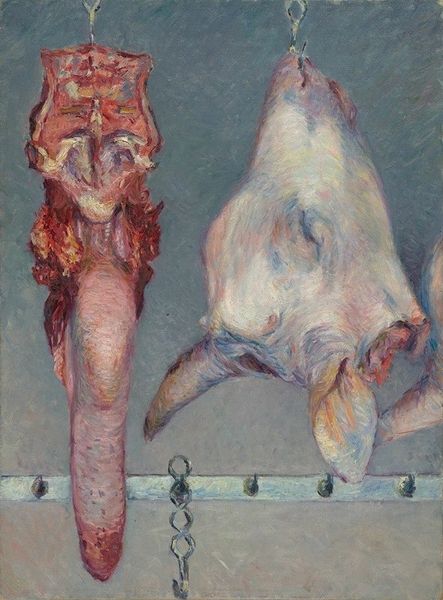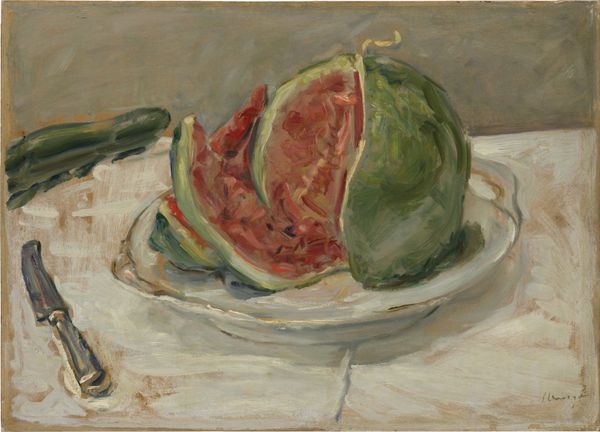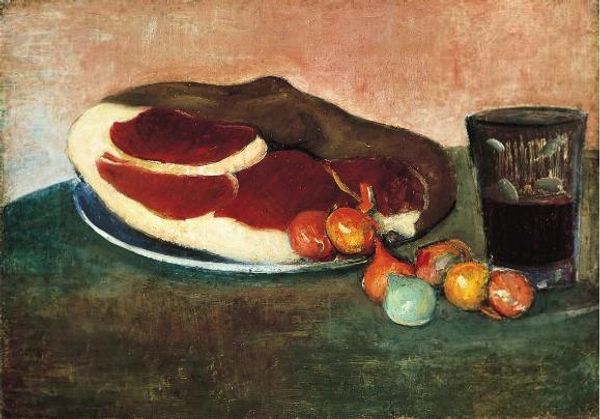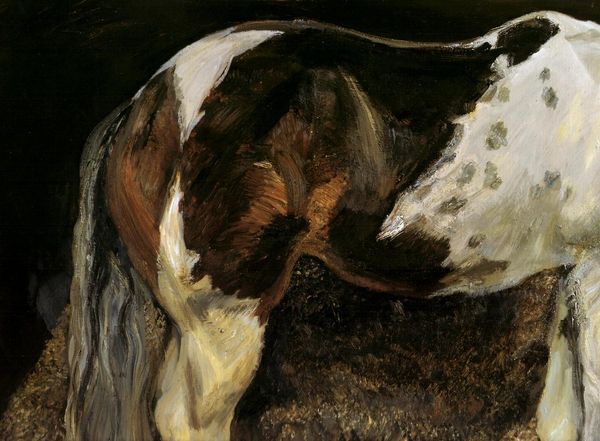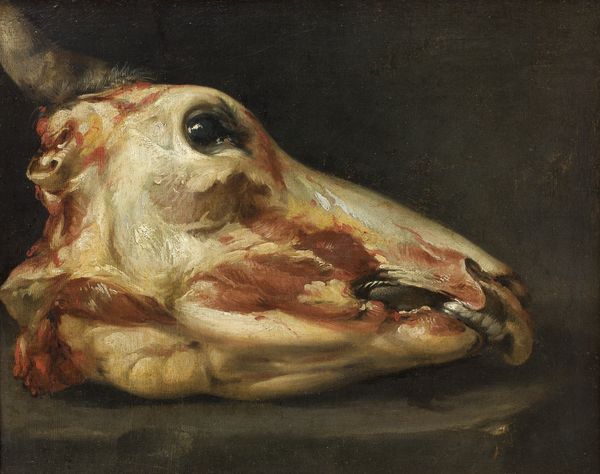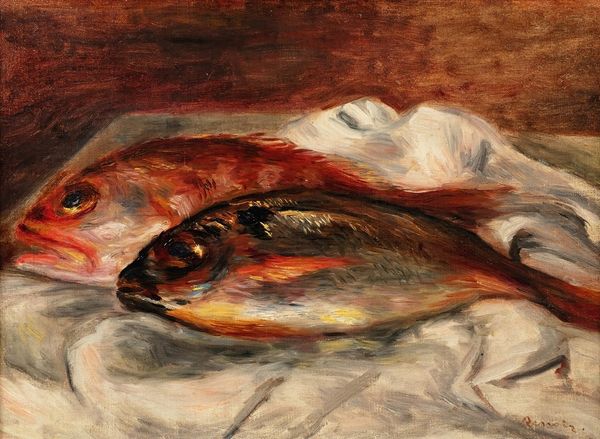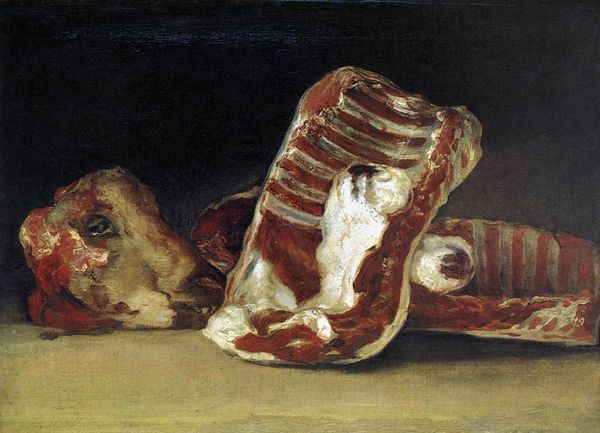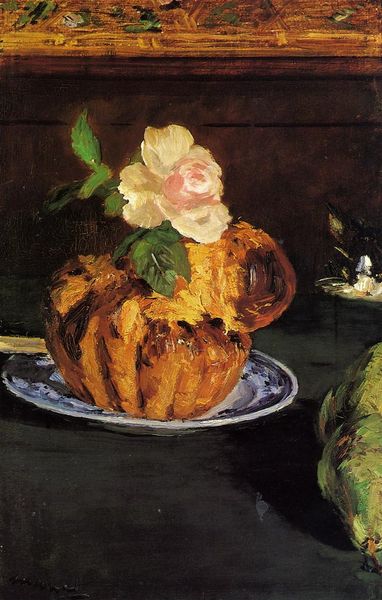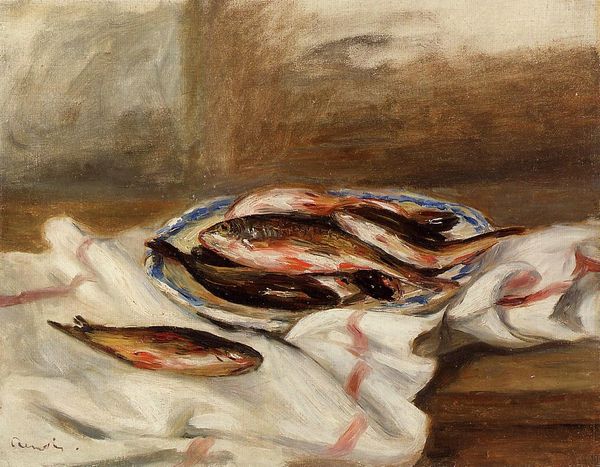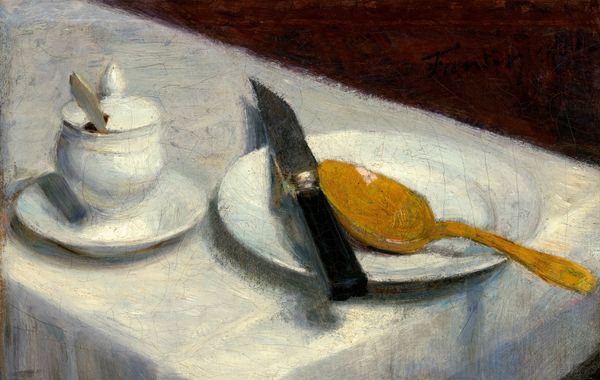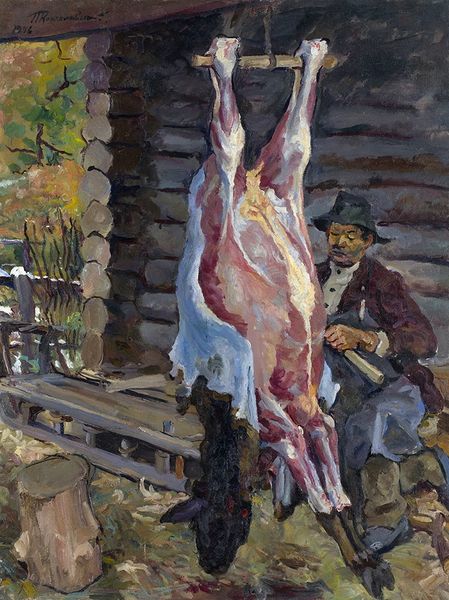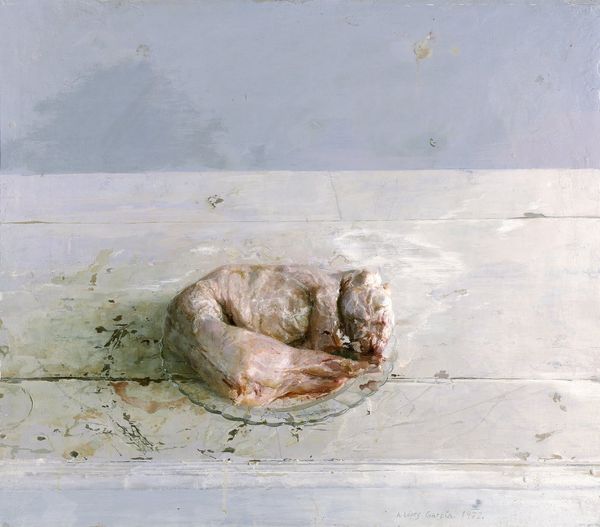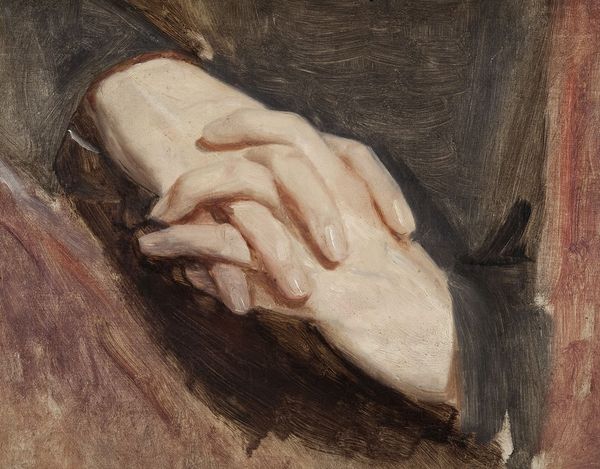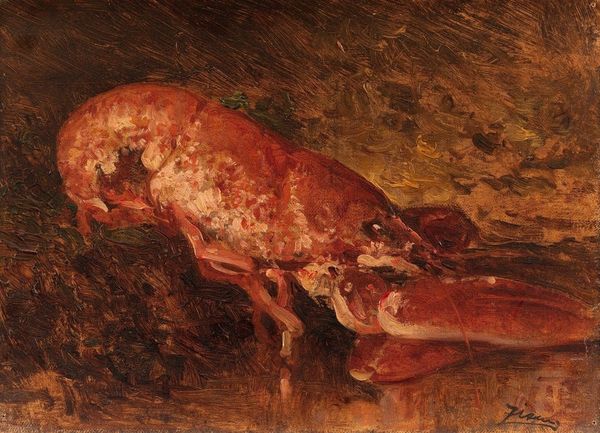
painting, oil-paint
#
portrait
#
food
#
animal
#
painting
#
impressionism
#
oil-paint
#
oil painting
#
genre-painting
#
post-impressionism
#
realism
Copyright: Public domain
Editor: We’re looking at Gustave Caillebotte's "Rib of Beef," painted in 1882. It’s an oil painting and quite a direct representation, wouldn’t you say? The composition really throws me, it's such a close crop, it’s almost unsettling. What’s your take on this, formally? Curator: Precisely! The radical cropping is key here. Note how Caillebotte rejects traditional still-life compositions. Instead, he presents a fragmented, almost abstract, form. Observe the stark contrast between the deep reds and marbled whites of the meat against the cool blue and violet background. Doesn't that chromatic opposition create a visual tension? Editor: I see that tension, and the brushwork! It's so loose, yet conveys the texture of the beef remarkably well. Do you think the lack of context --no table setting, no narrative -- adds to its power? Curator: Absolutely. By isolating the subject, Caillebotte compels us to confront the materiality of the object itself. The thick impasto, the visible brushstrokes - they draw attention to the act of painting, making the surface a crucial element of the artwork’s meaning. It's less about representing a rib of beef and more about exploring the language of paint itself. Where do you see connections with realism here? Editor: I understand now! The formal elements are carrying the weight, not the subject matter alone. I initially thought the piece was about representing reality, but you’ve reframed it as exploring paint and form *through* reality. It's brilliant! Curator: Precisely. Consider how Caillebotte anticipated the formal investigations of later modernists. This "Rib of Beef," viewed formally, provides rich insights into the evolution of painting.
Comments
No comments
Be the first to comment and join the conversation on the ultimate creative platform.
